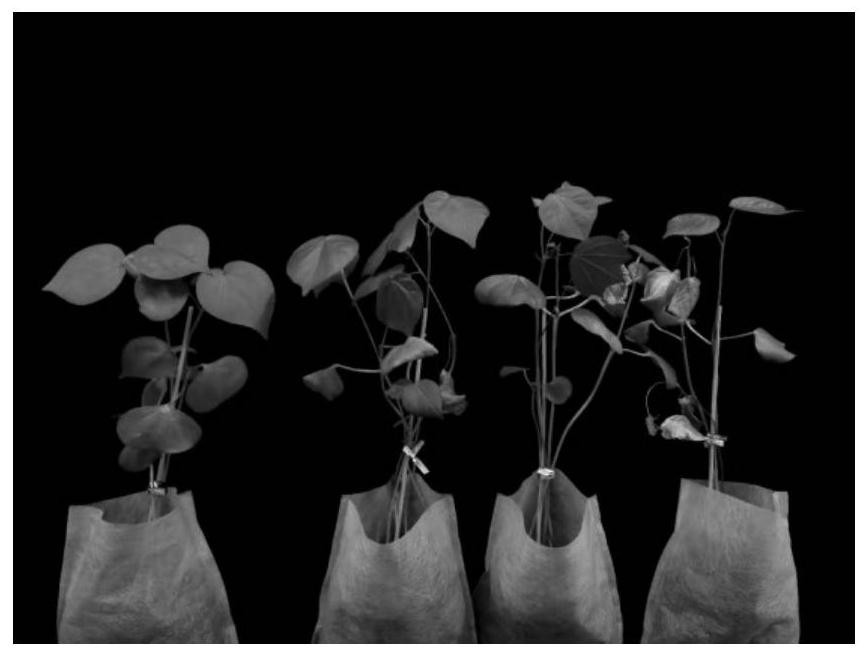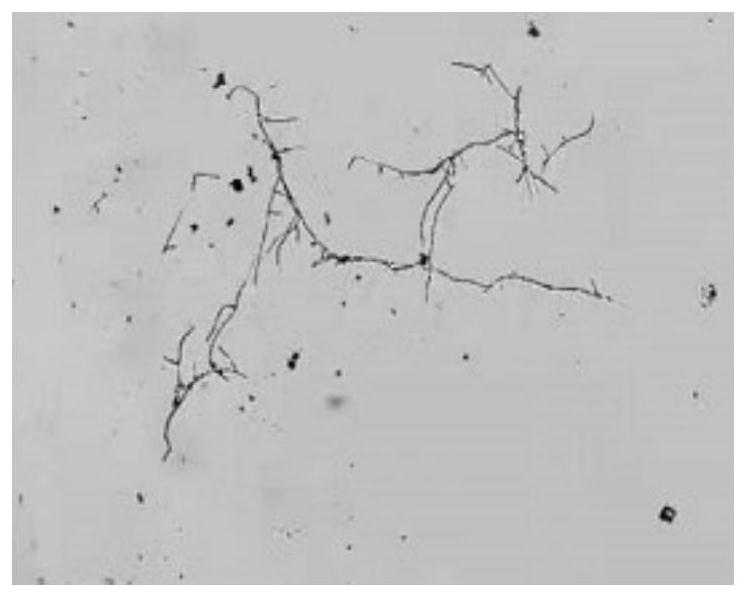Cotton verticillium wilt disease phenotype identification method
A technology for cotton verticillium wilt and disease, which is applied in the agricultural field, can solve the problems of human error in identification results, slow onset speed, and complicated steps, and achieves the effects of precise machine vision, high precision and simple operation.
- Summary
- Abstract
- Description
- Claims
- Application Information
AI Technical Summary
Problems solved by technology
Method used
Image
Examples
Embodiment Construction
[0028] The technical solution of the present invention will be described in further detail below in conjunction with the embodiments.
[0029] The purpose of the present invention can be achieved through the following technical solutions:
[0030] Step 1. Seedling cultivation in non-woven fabric seedling bags
[0031] The cultivation conditions of cotton seedlings are:
[0032] In the light stage, the temperature is 24°C, the light time is 14h, and the light intensity is 20000Lux;
[0033] In the dark stage, the temperature is 20°C, the dark time is 10h, and the humidity is 85% throughout.
[0034] The damage of cotton seedlings inoculated with Verticillium dahliae in non-woven fabric seedling bags is as follows figure 1 shown.
[0035] The method of inoculating Verticillium dahliae to cotton seedlings is as follows: 2 cotyledons and 1 true leaf of cotton are flattened, and each main root or lateral root protruding from the non-woven fabric seedling bag is wounded. , plac...
PUM
 Login to View More
Login to View More Abstract
Description
Claims
Application Information
 Login to View More
Login to View More - R&D
- Intellectual Property
- Life Sciences
- Materials
- Tech Scout
- Unparalleled Data Quality
- Higher Quality Content
- 60% Fewer Hallucinations
Browse by: Latest US Patents, China's latest patents, Technical Efficacy Thesaurus, Application Domain, Technology Topic, Popular Technical Reports.
© 2025 PatSnap. All rights reserved.Legal|Privacy policy|Modern Slavery Act Transparency Statement|Sitemap|About US| Contact US: help@patsnap.com



